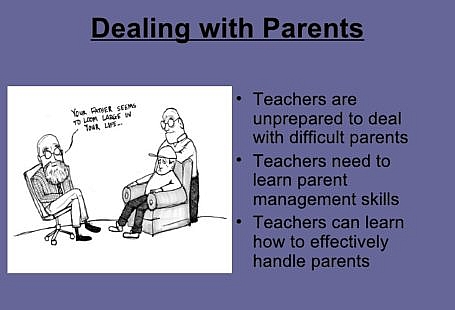Seeing someone you love in hospice care can be scary and painful. These ideas for how to help a loved one in hospice are practical, and will help alleviate the fear and awkwardness you may feel when you visit. Most of these tips are compassionate complementary and alternative therapies, which will bring comfort to both you and your loved one.
 To create the warmth and coziness of soft light, consider Tea Light Candles – LED and Battery Operated for the hospice room.
To create the warmth and coziness of soft light, consider Tea Light Candles – LED and Battery Operated for the hospice room. Battery-operated candles are safe, odorless, smoke-free, and easy to operate. Bringing these candles to the hospice will give you something practical to do when you visit your loved one, and will bring comfort and warmth to the room.
I interviewed Lisa Browder to learn how to help a loved one in hospice care. She started as a volunteer at Nathan Adelson Hospice in 1986, and is now the manager of the Bonnie Schreck Memorial Complementary Therapies Program. Here, she describes how different complementary and alternative medicine and therapies help hospice patients, including aromatherapy, massage, Reiki, music therapy, and pet therapy.
Before her tips for helping a loved one in hospice, here’s a parable that may help you let go of your loved one. Sometimes, to help someone cope with death, we need to learn how to trust and have faith that God is in control – and He’s waiting to catch us when we fall.
The Parable of the Mountain Climber
Once upon a time there was a mountain climber who was determined to reach the summit of a high mountain. After years of preparation, she began her adventure. She journeyed alone, because she wanted to prove she could climb the mountain by herself.
She began her ascent. Daylight faded, but she decided to continue climbing until night fell. Soon she was overcome by total darkness. The moon and stars were hidden in the clouds, and she couldn’t see anything.
The mountain climber was only a few yards away from the summit when she slipped and fell off a ridge, plummeting at a frightening speed. While falling, she could only see shadow-like figures in the darkness while she felt gravity sucking her down.
She thought death was near when suddenly she felt the tightening of the rope around her waist. She jerked to a stop – her rope was caught on part of the rock wall of the mountain.
In desperation, suspended in mid-air, she screamed, “God, please help me!”
“How would you like me to help you?” said a deep voice.
“Save me!” the climber cried.

“How to Help a Loved One in Hospice” image by Trixis via DeviantArt
“Do you really think I can save you?”
“Yes, God, I do!”
“Well then, cut the rope,” said God.
After a moment of silence, the mountain climber tightened her grip on the rope around her waist.
A few hours later, the sun rose and the rescue team found her. She had frozen to death, her hands clutching the rope tied to her waist…and she was suspended only two feet from the ground.
How to Help a Loved One in Hospice Care
To truly be there for someone you love, you need to let go of your expectations, plans, hopes, and wishes for their life and death. Surrender and acceptance is the only way to find freedom from fear and pain. You’ll still grief the end of your loved one’s life, but you’ll grieve in peace and acceptance.
Do you want to give your loved one something that will help ease the transition? Read 12 Gift Ideas for Someone Who is Dying.
Below, Lisa shares her ideas on how to helped a loved one in hospice. She’s learned that dying is an intricate process that doesn’t usually go according to plan. To adequately start to prepare for death – in hospice care or at home – you might learn what happens internally, how that impacts the dying process, and how much time you might expect to have left with your loved one.
Learning about the complementary and alternative medicine and therapies that are available in hospice can help both you and your loved one. Massage, Reiki, art therapy, reflexology, pet therapy, music therapy and aromatherapy are examples of complementary and alternative therapies that play a significant role in a loved one’s transition from life to death in hospice care.
Essential oils and aromatherapy in hospice care
 Essential oils for a soothing bath include lavender, frankincense, myrrh and rose. If you don’t feel comfortable giving your loved one a bed or tub bath, a hospice care worker can help. Aromatherapy can be the source of pleasant, loving, happy memories of the past.
Essential oils for a soothing bath include lavender, frankincense, myrrh and rose. If you don’t feel comfortable giving your loved one a bed or tub bath, a hospice care worker can help. Aromatherapy can be the source of pleasant, loving, happy memories of the past.
The Top 6 Organic Pure Essential Aromatherapy Oils are Lavender, Frankincense, Eucalyptus, Rosemary, Sweet Orange, and Peppermint. Before you decide that essential oils are a good way to help a loved one in hospice, talk to the the staff. Sometimes aromas are too strong. Talk to your family, as well; if your loved one is reminded of painful memories when he smells Frankincense, for instance, you’ll want to avoid that essential oil!
Some hospice care facilities offer essential oil roll-ons for sorrow and grief, to help family process the loss of their loved one. Related to this, a hospice massage therapist and/or reflexologist can provide comforting touch to your loved one throughout the dying process. Massage is a wonderful alternative and complementary therapy for hospice patients. Gentle massage will help your loved one feel physically and emotionally comforted.
Healing creams for hospice patients
Another idea on how to help a loved one in hospice is a soothing cream with therapeutic properties. Therapeutic creams are formulated with essential oils known for their specific healing and soothing properties, and they can help your loved one cope with symptoms such as nausea, respiratory issues, depression, muscular aches and pains, insomnia, anxiety, dry/itchy skin, constipation, edema and stress. The added benefit is the pleasant and mild aroma.
Aveeno Baby Soothing Relief Cream Wash is a gentle alternative to a therapeutic-grade cream. Finding the right complementary and alternative medicines and therapies for hospice patients might take some time and research, but the benefits are priceless.
Pet therapy in hospice care
If your loved one moved to hospice care and left a pet behind, check with the staff about different types of pet therapy. This is one of the best ways to help a loved on in hospice: bring his own dog or cat in for a visit, or ask if a pet therapist can visit. Pet therapy research shows that hospice patients have lower blood pressure, and lower heart and respiratory rates after petting an animal. And, they sleep better. Feeling healthier will help your loved one deal with end of life issues.
Art therapy for hospice patients

How to Help a Loved One in Hospice
Art therapy is an alternative therapy that can help hospice patients cope with unresolved emotional issues. Reiki is a wonderful, warm exchange of energy between the patient and the practitioner that commonly puts patients to sleep, and most people can attest to the soothing power of soft music to lull the senses into a quieter state.
Color Me Calm: 100 Coloring Templates for Meditation and Relaxation is a Zen Coloring Book that you and your loved one work on together. I have the Color Me Happy one, and I love the child-like trance I go into when my Little Sister and I color together. Coloring is also a great way to have heartfelt conversations with your loved one. When you’re both calm and relaxed, you might even ask your loved one how you can help him have a better experience in hospice care.
Music therapy in hospice care
Some hospices have formal music therapists who visit the patients’ rooms, and play guitar, harmonica, violin, ukelele, or other instruments for the patients and families. Other hospices have music stations on the television, which can be left on without anyone having to worry about getting up to change the CD.
Reflexology for a loved one in hospice
Massage and reflexology are hands-on complementary and alternative medicines that unravel tight muscles and promote relaxation for hospice patients. Until about 10 years ago, most complementary or alternative therapies for hospice patients were considered unconventional and a waste of time. Today, complementary and alternative medicines are being much more common. Hospice doctors, nurses, and staff are seeing the difference they can make for people who are dying and their families.
Alternative and complementary therapies in hospice care can help alleviate physical symptoms, and soothe the mind and spirit (especially if your loved one is afraid to die). Massage therapists who work in hospice care know how to adjust pressure and technique to accommodate every nuance of the dying process.
Caring for your loved one in hospice can bring you moments of great beauty and peace. This experience has the potential to change you in positive ways.
 To learn more about caring for a hospice patient or a loved one who is facing death, read Final Gifts: Understanding the Special Awareness, Needs, and Communications of the Dying by Maggie Callanan and Patricia Kelley. It’s filled with practical advice on responding to the requests of people who are dying and helping them prepare emotionally and spiritually for the end of life. This book will give you more ideas on how to help a loved one in hospice care live fully to the very end.
To learn more about caring for a hospice patient or a loved one who is facing death, read Final Gifts: Understanding the Special Awareness, Needs, and Communications of the Dying by Maggie Callanan and Patricia Kelley. It’s filled with practical advice on responding to the requests of people who are dying and helping them prepare emotionally and spiritually for the end of life. This book will give you more ideas on how to help a loved one in hospice care live fully to the very end.
Remember that your relationships don’t have to continue the way they’ve always been. Learning how to help a loved one in hospice can bring the power to heal family rifts, bridge gaps, and open hearts.
If you’re ready to start thinking about what happens after your loved one leaves the hospice, read 6 Ideas for Creative Memorial Services.
“With my last breath, I’ll exhale my love for you. I hope it’s a cold day, so you can see what you meant to me.” – Jarod Kintz.
If you have any thoughts on these ideas for helping a loved one in hospice, please share below. I also welcome your thoughts on The Parable of the Mountain Climber – as well as other complementary and alternative medicine for people who are dying.




